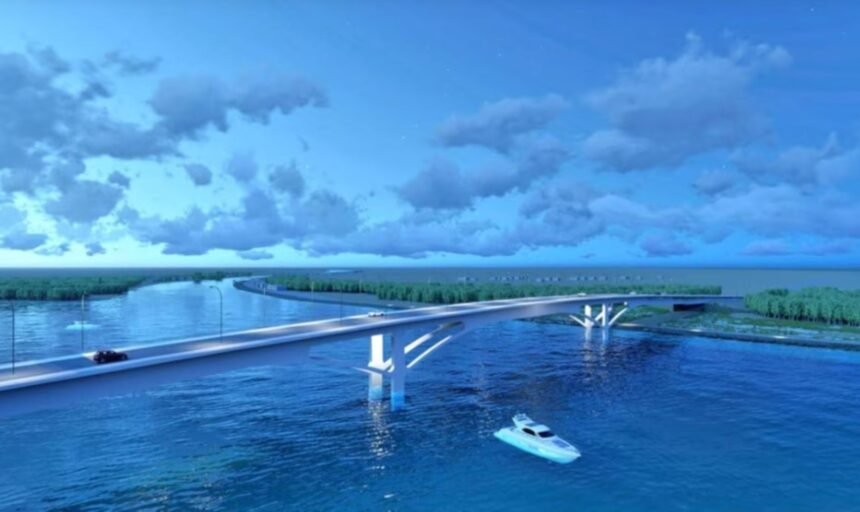The Parliament of Montenegro has recently ratified an agreement with Albania for the construction of a new bridge over the Buna River. The agreement, signed in Podgorica on February 27, 2023, by the Prime Ministers of the two countries, Dritan Abazović and Edi Rama, was previously ratified by the Albanian Parliament and published in the Official Gazette in June 2023.
The bridge, planned to be 380 meters long with three arches, will accommodate vehicles, pedestrians, and cyclists, serving as a new connection not only physically but also symbolically. This new route, created by the bridge, shortens the distance between the long beach of Ulcinj and Velipojë, but more importantly – it shortens the distance between people.
A Monumental Investment in Regional Unity
This is not just a €20 million investment, equally co-financed by Albania and Montenegro. The bridge symbolizes the connection of Albanians beyond state borders – from Ulcinj to Velipojë, from Plava and Gucia to Tropojë, from Tetova to Shkodër, and from Gjakova to Lezhë.
For centuries, Albanians have shared the same language, customs, seas, and often the same tragedies of separation. Today, they receive a small piece of reunification. The bridge over the Buna is not just infrastructure but an encouragement for a new policy of openness, integration, and regional cooperation that goes beyond protocol relations between states.
A New Gateway for Montenegro and Albania
By crossing the river that once served as a frozen border, the bridge offers Montenegro a new gateway to the Albanian market and provides Albania with more natural access to the Ulcinj coastline, where thousands of Albanians live and work. More movement, more tourism, and more exchanges will result in greater prosperity for the surrounding communities that have long lived in the shadows of development.
A Step Toward a Unified Albanian Space in the Balkans
This bridge should also be seen as a concrete step toward a bigger idea: that of a united Albanian space in the Balkans, natural, interconnected, and functional, which does not challenge political borders but transcends them with cooperation. A Balkans where Albanians in Albania, Kosovo, North Macedonia, and Montenegro are closer to each other through infrastructure, trade, culture, and shared national awareness.
In a time when borders are increasingly seen as less of a divide and more as bridges of cooperation, Albania and Montenegro have chosen to build a real bridge that represents this new spirit. It is the responsibility of political leaders, local authorities, civil society, and citizens to ensure that this bridge becomes not just a construction project but a vibrant artery of coexistence and shared development.
A Bridge of Unity Beyond Boundaries
In the end, this bridge does not merely unite two banks of a river; it unites Velipojë and Ulcinj as two Albanian communities that were artificially separated but are naturally connected by history, language, and the shared sea. It brings closer those who once shared meals and songs but for years were forced to travel through winding mountain roads, narrow paths, and long routes to meet each other.
Now, lunch can be enjoyed in Velipojë, and dinner in Ulcinj – or vice versa – without the burden of a tiresome journey that separated people who should never have been divided. In silence, this bridge restores an old injustice: the lack of connection between two parts of the same people.







